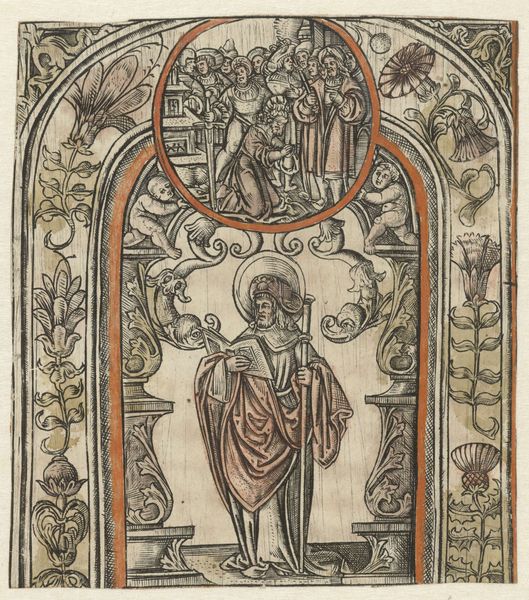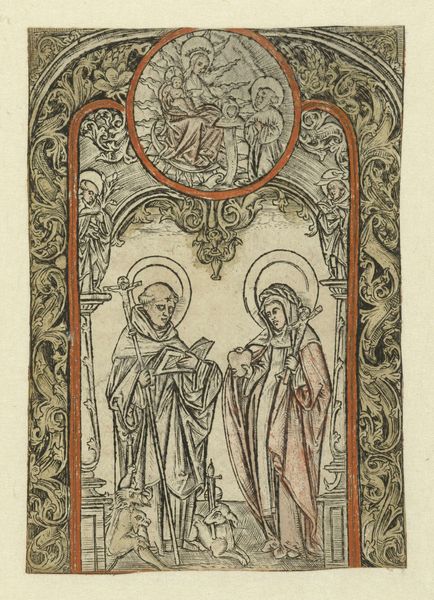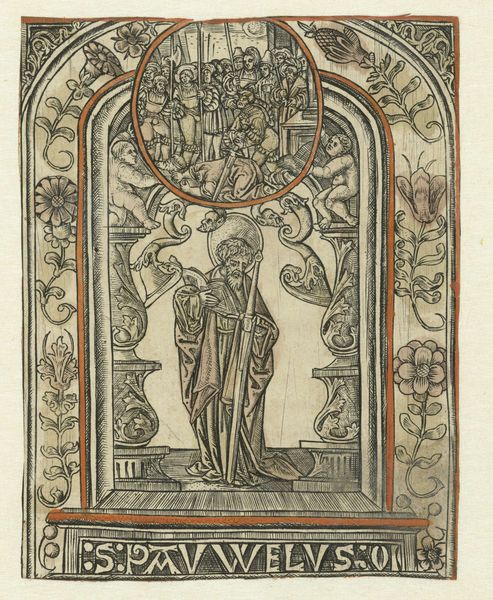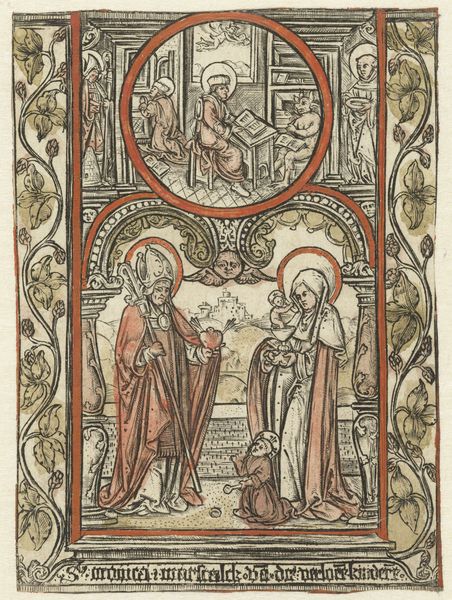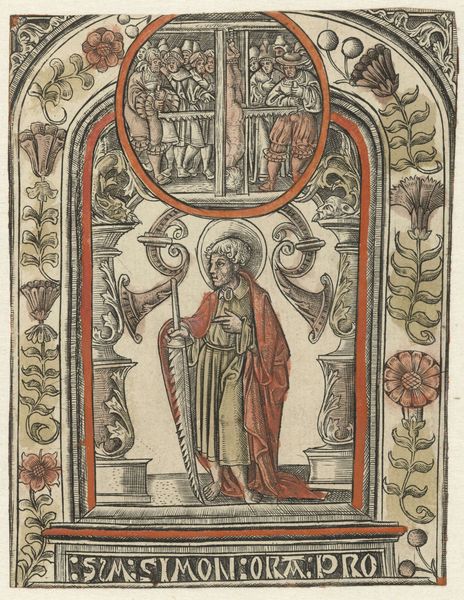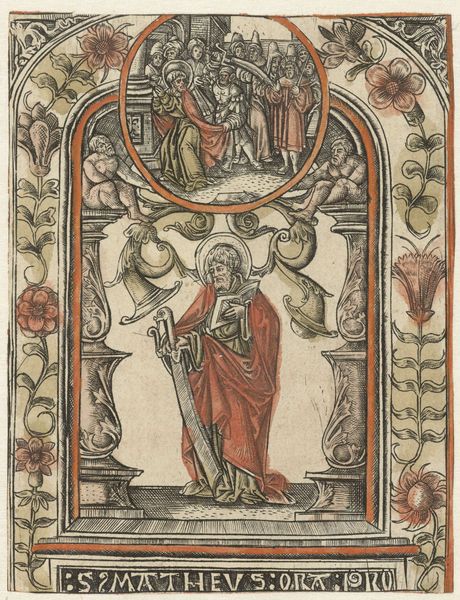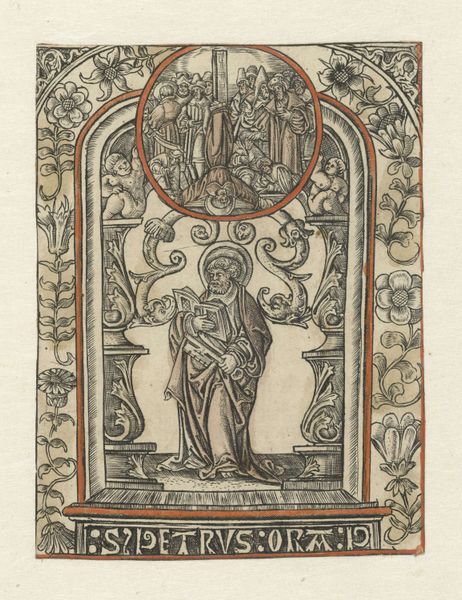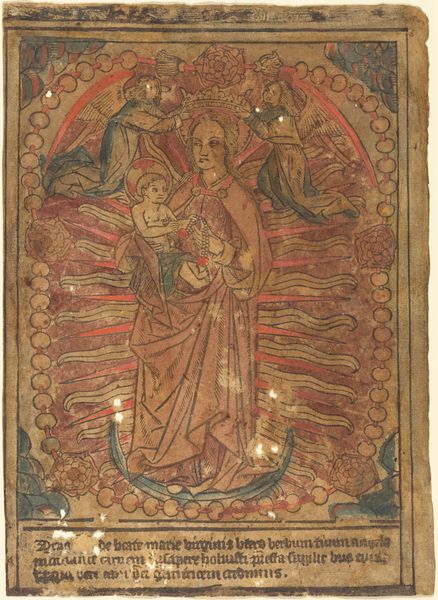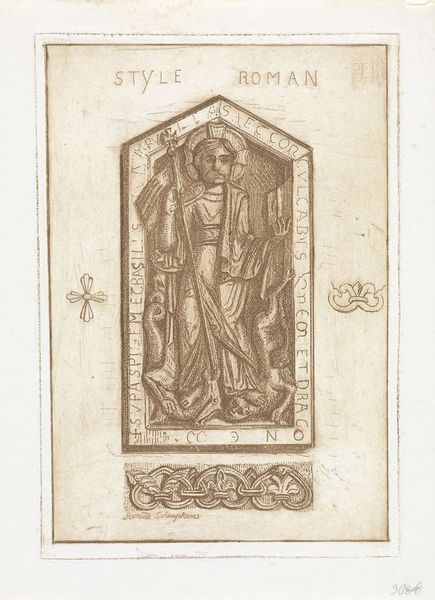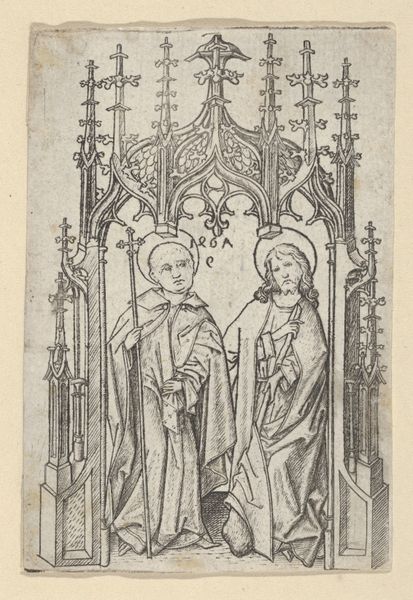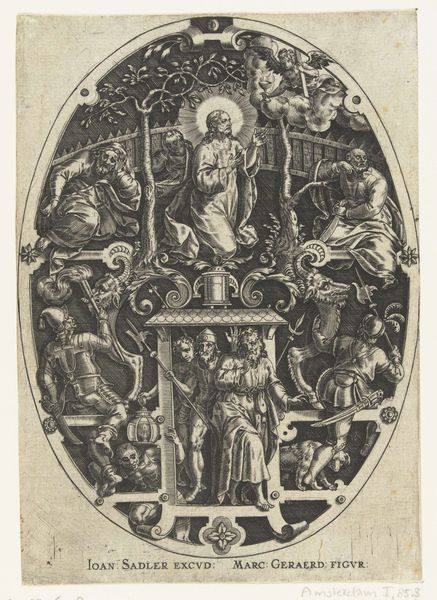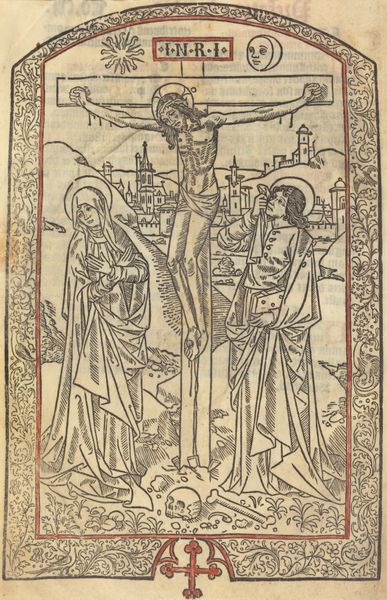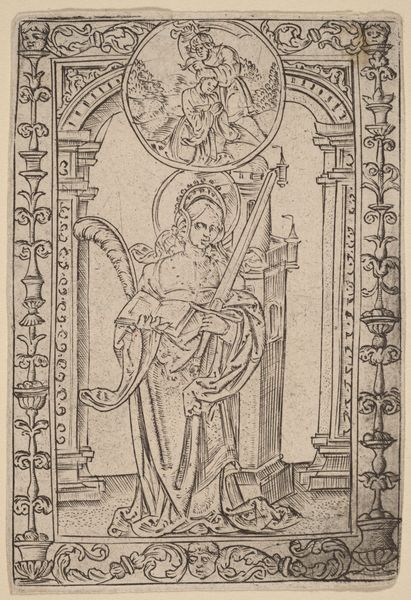
drawing, print, ink, engraving
#
portrait
#
drawing
#
medieval
#
narrative-art
#
pen drawing
# print
#
figuration
#
ink
#
pen-ink sketch
#
pen work
#
history-painting
#
engraving
Dimensions: height 102 mm, width 79 mm
Copyright: Rijks Museum: Open Domain
Editor: Here we have "The Apostle James the Less and His Martyrdom" by Allaert Claesz., made sometime between 1510 and 1530. It’s an ink and pen drawing, so detailed and yet quite small. The narrative scene above the central figure is particularly striking. What draws your eye when you look at this? Curator: Immediately, I’m interested in the means of production. This is not just an image; it's a crafted object reflecting specific material conditions. Ink, pen, paper – seemingly simple, but they speak volumes about the accessibility of image-making in the early 16th century. Was this a unique artwork or part of a larger series of prints meant for wider circulation? Editor: I hadn’t considered that. The Rijksmuseum categorizes it as a print as well as a drawing. What implications does that have for its cultural impact? Curator: Mass production changes everything. Printmaking allowed for the relatively inexpensive creation and distribution of images. This allowed for wider access and interpretation. Before, this type of detailed iconography was reserved for the wealthy and their private collections. Here we are seeing a moment of expanded material distribution in art history. The question then becomes who produced it, how was it produced and where were those raw materials extracted from? Editor: So it moves away from the unique aura of a painting? Curator: Precisely. Consider also the labor involved – the engraver, the printer, the distributors. The value shifts from individual artistry to the collaborative process, making this object not only a representation of Saint James but a marker of social and economic practices. What did this kind of visual saturation do for consumers of art? What messages were circulated among the people due to mass media? Editor: That gives me a completely different perspective. I was initially drawn to the artistic details, but now I see it as a product of its time, a tangible representation of labor and consumption. Curator: Indeed. Looking closely at materiality makes visible a hidden aspect of the society of its time. There is so much that artworks reveal once we view them from this lens.
Comments
No comments
Be the first to comment and join the conversation on the ultimate creative platform.

